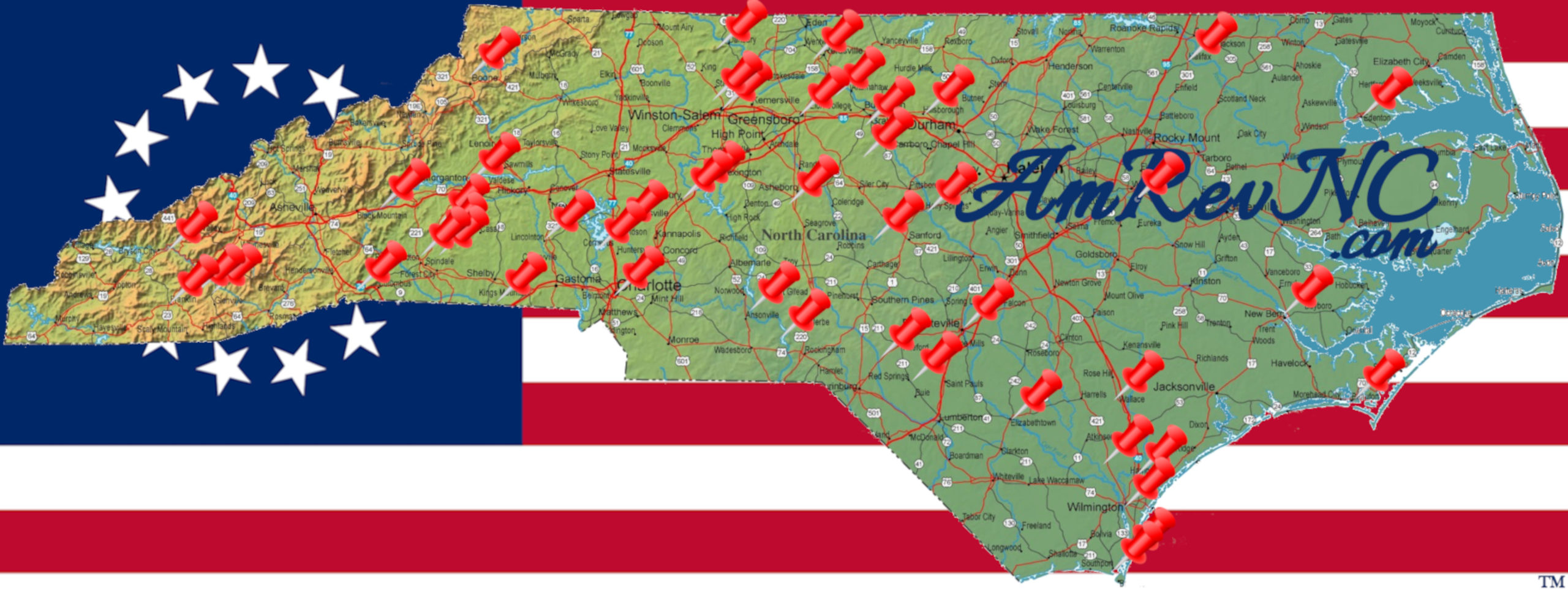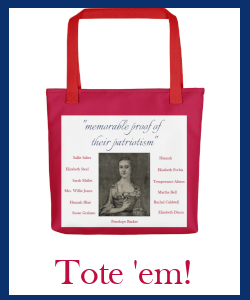Resting Place of a Patriot Hero
Location
View Larger Map
Other maps: Bing, Google, Mapquest.
Coordinates: 35.3647, -80.8983.
Type: Stop
Tour: Race to the Dan
County: Mecklenburg
You are going to the older cemetery of Hopewell Presbyterian Church. The church property is fronted by a long stone wall. The coordinates are the entrance to a driveway at the southern end of the wall (closest to Charlotte).
If the parking lot is empty, the grave is visible from your vehicle at a distance. Closer inspection requires crossing typical cemetery ground.

Buried by Torchlight
Go to the end of the parking lot closest to the church. Walk to the cluster of three columns (for Davidson kin), and then between the middle one and the one to the right. Look toward the left, and find the vertical stone monument with a “box marker” that looks like a tomb on its right.

 As a two-year-old, William Davidson was part of the “Great Migration” down the Great Wagon Road from Pennsylvania, settling in what now is Iredell County. He went to school at Sugar Creek Church near Charlotte. Sadly, he was only 13 when his father died.[1]
As a two-year-old, William Davidson was part of the “Great Migration” down the Great Wagon Road from Pennsylvania, settling in what now is Iredell County. He went to school at Sugar Creek Church near Charlotte. Sadly, he was only 13 when his father died.[1]
As a part-time “militia” soldier at 19, he helped escort Royal Gov. William Tryon to treaty negotiations with the Cherokees in 1767.[2] Starting as a captain in the Rowan County militia in 1776, he served against the Cherokees in N.C. and Loyalists in South Carolina. Davidson became a major in the regular Continental Army the next year. After helping to recruit soldiers, he was sent north from Halifax in time to fight at the Battle of Germantown (Penn.). He served under Gen. George Washington, suffered through the winter camp at Valley Forge, and rose to command of a North Carolina regiment. After helping protect supplies in Philadelphia under Gen. Benedict Arnold, later a traitor, the regiment was sent south in 1779. It was in Charleston when that city fell to the British the next year, but Davidson missed getting captured because he was on leave for a family visit after a three-year absence.[3]
The regiments were reorganized due to the lost manpower, and Davidson shifted back to the militia, commanding the Mecklenburg County Regiment. He led the successful attack at the Battle of Colson’s Mill but took bullets to the stomach and required two months to recover. In September of that year he was named interim brigadier general of the multi-county Salisbury District militia. In that role he was put in charge of blocking the British at the Catawba River crossings during their 1781 invasion of N.C., now called the “Race to the Dan.”
Davidson was killed at age 35 by a bullet to the chest as he directed the defense of Cowan’s Ford, at the base of today’s Lake Norman. The next day two Patriot militiamen found his body where he fell or at the edge of the Catawba River, stripped by the British. They brought him here to Hopewell Presbyterian Church, organized in 1762, and hurriedly buried Davidson by torchlight. Perhaps they feared Tories would desecrate it further, or maybe they just wanted to join the rest of the Patriots retreating toward Salisbury. Davidson is still where he was buried that night. His wallet made a longer journey: It turned up 183 years later in the British Museum in London!
The town and county of Davidson, and Davidson College, are named for him.

Davidson is buried at the normal depth below the surface under the apparent tomb, as is true of the other “box markers” here. This cemetery is believed to have “the third-highest concentration of box markers in North Carolina,” according to a sign in the cemetery.
Other Revolutionary veterans are buried here, most notably John McNitt Alexander, a surveyor who helped guide Maj. Gen. Nathanael Greene from the Yadkin River to the Dan in the Race to the Dan. The earliest grave dates to 1775.
Murdered with His (Own?) Gun
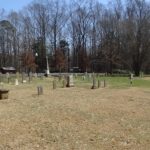
Facing the Davidson grave, look over your left shoulder across an empty space to a vertical, rounded tombstone several rows away. It is a short distance to the right of a tiny brick box marker. Walk to the tombstone for Francis Bradley.
 The British had invaded North Carolina before, occupying Charlotte in September of 1780. Francis Bradley was a member of the Mecklenburg County militia that opposed the invasion—in fact, he collected taxes to support the regiment.[4] Bradley used a rifle borrowed from Maj. John Davidson, according to Davidson’s grandson, to pick off pickets guarding the British camp in Charlotte. He also helped to harass British or Loyalist units foraging for supplies.[5] He was one of a tiny group of Patriots who drove off a much-larger force from McIntyre’s Farm, a few miles to the left down Beattie’s Ford Road, in what now is called the Battle of the Bees. Tradition claims Bradley was wanted by the British due to his sharpshooting prowess.
The British had invaded North Carolina before, occupying Charlotte in September of 1780. Francis Bradley was a member of the Mecklenburg County militia that opposed the invasion—in fact, he collected taxes to support the regiment.[4] Bradley used a rifle borrowed from Maj. John Davidson, according to Davidson’s grandson, to pick off pickets guarding the British camp in Charlotte. He also helped to harass British or Loyalist units foraging for supplies.[5] He was one of a tiny group of Patriots who drove off a much-larger force from McIntyre’s Farm, a few miles to the left down Beattie’s Ford Road, in what now is called the Battle of the Bees. Tradition claims Bradley was wanted by the British due to his sharpshooting prowess.
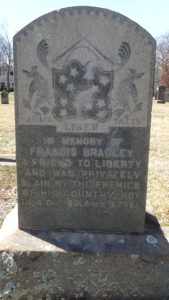
A few weeks later, after the British pulled back from Charlotte, four Loyalists or “Tories” from the northern part of the state deserted them to return home. On Tuesday, November 14th, they happened to hide in a thicket a mile from Bradley’s house. He and his wife Abigail lived on Long Creek, which crosses Beattie’s Ford Road about three miles to the left, in a two-room log cabin that survived into the 20th Century.[6]
Bradley took a gun—either his own or Davidson’s—and went in search of some missing cows. He happened across two of the Tories, and after asking some questions, took them prisoner near the thicket. One story says one of them pretended to be sick to get an invitation to Bradley’s home. Regardless, their colleagues came out and grabbed him. Bradley, a large man described as a “terror,” fought back. But a Tory wrestled Bradley’s gun away and shot him with it.

They made the mistake of keeping the gun, and also taking Bradley’s silver buckles or buttons, which led Patriots to them. Two of his attackers were killed within weeks. The other two were caught and jailed in Salisbury. One apparently fessed up and told the whole story in court.[7] As a result the last man was hung, though sources differ on whether this was done legally, or not so legally by friends of Bradley.
As you can see on his tombstone, a replacement, Bradley was 37. The original is preserved in the church, bearing similar art and the same epitaph: “A Friend to Liberty and was Privately Slain by the Enemies of His Country.” The Latin words on both, “Arma Liber Tatis,” translate to “Weapons of War.”
Abigail lived to age 69, and is buried to his right.
Davidson Memorial
A 1925 marker erected by a descendant where Davidson fell eventually became forgotten and overgrown. When a bulldozer was preparing the site of the power plant at the Lake Norman dam, the operator spotted it. It was moved to a location on the way to his grave.
To see it, turn right from the parking lot onto Beattie’s Ford Road and drive north 5.1 miles. The monument faces south at the far right corner of Brown Mill Road (coordinates: 35.4253, -80.9159). Only privately owned parking is nearby.
The monument says:
Cowan’s Ford, Catawba River
Where
The Revolutionary Hero,
Gen’l. William Lee Davidson
Was Killed in Action Feb. 1, 1781
Born at
Lancaster, Pa.
1746
Davidson College
Founded 1837[1]
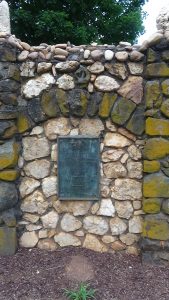
More Information
- Davidson, Chalmers, ‘Davidson, William Lee’, NCpedia, 2001 <https://www.ncpedia.org/biography/davidson-william-lee> [accessed 18 March 2022]
- ‘Francis Bradley’ <http://freepages.rootsweb.com/~beckenbachsimons/genealogy/francisbradley2.htm> [accessed 22 December 2021]
- Graham, William A. (William Alexander), General Joseph Graham and His Papers on North Carolina Revolutionary History (Raleigh, N.C.: Edwards & Broughton, 1904) <http://archive.org/details/cu31924032738233> [accessed 27 March 2020]
- Hunter, C.L., ‘Capt. Francis Bradley’, The Southern Home (Charlotte, N.C., 14 March 1879)
- Hunter, C.L., Sketches of Western North Carolina, Historical and Biographical (Baltimore, Md.: Regional Publishing Company, 1970)
- Lewis, J. D., ‘The Patriot Leaders in North Carolina – William Lee Davidson’, Carolana, 2013 <https://www.carolana.com/NC/Revolution/patriot_leaders_nc_william_lee_davidson.html> [accessed 3 April 2020]
- ‘Marker: L-23’, North Carolina Highway Historical Marker Program <http://www.ncmarkers.com/Markers.aspx?MarkerId=L-23> [accessed 18 March 2022]
- Parker, Hershel, ‘Avenging Francis Bradley, the Mecklenburg Marksman: A Family Story’, Journal of the American Revolution, 2017 <https://allthingsliberty.com/2017/06/avenging-francis-bradley-mecklenburg-marksman-family-story/> [accessed 22 December 2021]
- Rankin, Hugh F., The North Carolina Continentals (Chapel Hill: The University of North Carolina Press, 1971)
- Russell, Phillips, North Carolina in the Revolutionary War (Charlotte, N.C.: Heritage Printers, Inc., 1965)
- Sherman, Wm. Thomas, Calendar and Record of the Revolutionary War in the South: 1780-1781, Tenth Edition (Seattle, WA: Gun Jones Publishing, 2007) <https://www.americanrevolution.org/calendar_south_10_ed_update_2017.pdf>
[1] Russell 1965.
[2] Ibid.
[3] Rankin 1971.
[4] Hunter 1970.
[5] Graham.
[6] ‘Francis Bradley.’
[7] Graham.
← Cowan’s Ford | Race to the Dan Tour | Battle of the Bees →
